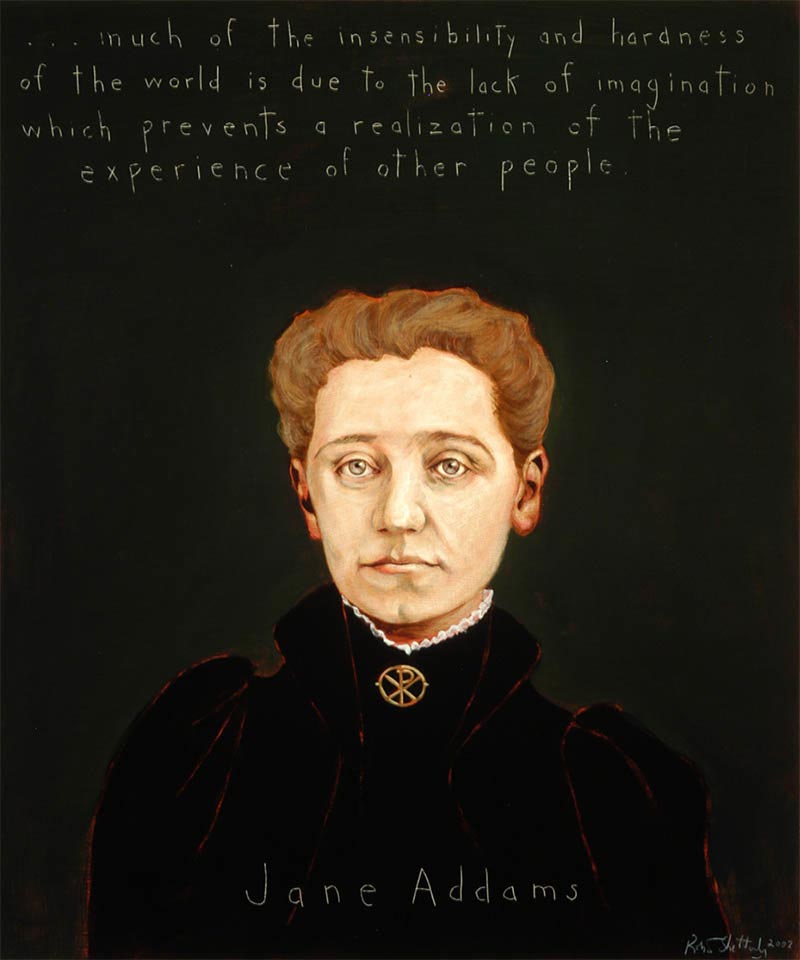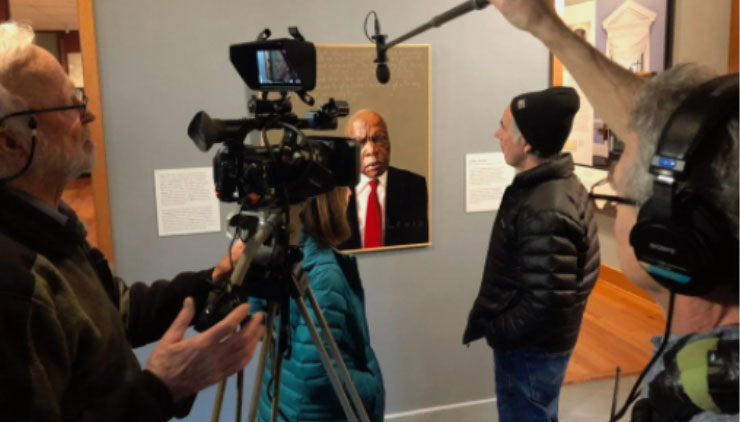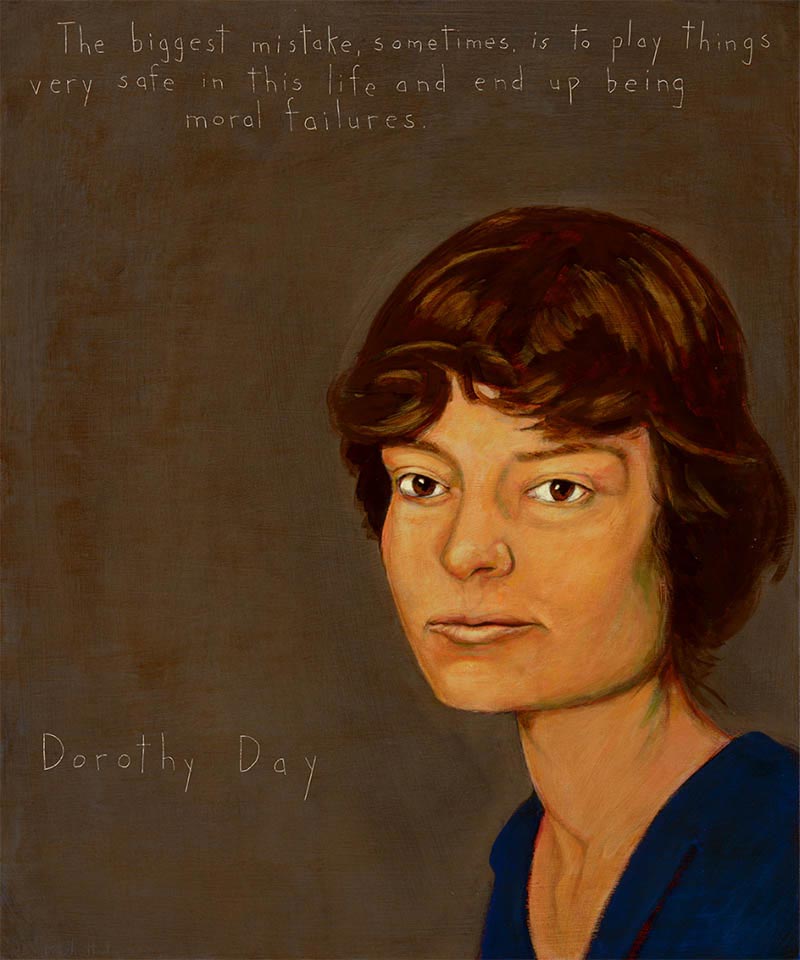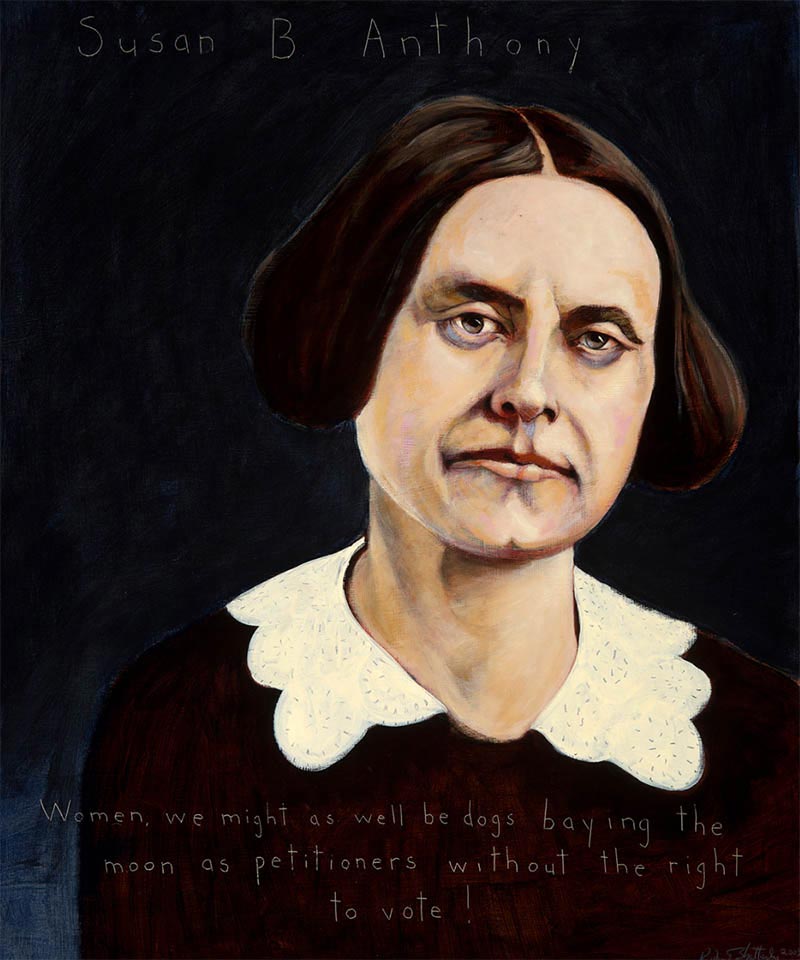
Jane Addams
Social Reformer : 1860 - 1935
“…Much of the insensibility and hardness of the world is due to the lack of imagination which prevents a realization of the experience of other people.”
Biography
If one were to put a face to the social activism of the Progressive Era (1890-1920), Laura Jane Addams would be its natural choice. At a time when reform was happening in nearly every aspect of American life, Addams played a critical role. Not only was she a trailblazer in the fields of social work and sociology, but she was also a leader of the peace movement and in the struggle for women’s suffrage.
Addams was born on September 6, 1860 in Cedarville, IL to John and Sarah Addams, their eighth child of nine. John Addams, a former Illinois state senator, was one of the founders of the Illinois Republican Party, and a longtime supporter of the future 16th president, Abraham Lincoln. Jane Addams benefited from the relative privilege of her family’s social standing because her father supported her desire for higher education. Addams graduated from the Rockford Female Seminary in 1881 and moved to Philadelphia, PA in order to attend medical school at the Woman’s Medical College of Philadelphia. But because of various personal health issues, Addams was unable to complete her medical education.
During a trip to England, Addams had an opportunity to visit Toynbee Hall, a settlement house for the poor that was established by Samuel and Henrietta Barnett in 1884. The Barnetts wanted Toynbee Hall to be a place where future English leaders could see poverty first hand, with the hope that they would devise solutions to alleviate the challenges of the poor. The Barnetts were motivated by social Christianity, and Addams, having become a firm believer in that philosophy, decided to open a settlement house in Chicago with similar objectives. With the help of her close friend, Ellen Gates Starr, Addams founded Hull House in 1889. It was the first settlement house in the United States.
The original mission of Hull House was to offer educational programs for newly arrived immigrants. However, it became clear to Addams and Starr that they would have to provide more comprehensive social and cultural services to their residents, as well as to the broader neighborhood. As Hull House grew, it provided kindergarten and evening classes, a public kitchen and library, an art gallery and a gymnasium among its many services. The house also served as a training facility for social workers. “Social advance depends as much upon the process through which it is secured as upon the result itself.” And it was through Hull House that many within those immigrant communities improved their lives.
Through her work with Hull House, Addams saw the difficult, and sometimes horrific, circumstances that the various immigrant communities faced. As a result Hull House became an incubator of progressive ideas. Many of those ideas for improving the lot of the poor, women, children and immigrants came from women. Yet, because women lacked the vote, all of their ideas had to receive tacit approval from men in order to be implemented. Addams, who was already an inspiration to other American women of her class, joined the effort to win the right to vote for women and lent her respected imprimatur to the cause.
Even without the right to vote, the volunteers at Hull House created the Immigrant Protection League and the nation’s first juvenile court. They also worked to increase protections for women and children in the workplace, achieving the passage of legislation regulating child labor in 1916.
Addams wrote and lectured extensively, sharing the experiences of her work at Hull House. She penned two autobiographical works, Twenty Years at Hull-House (1910) and The Second Twenty Years at Hull-House (1930). Addams turned down the offer of a position in the Sociology department of the University of Chicago, but the documentation methods that Addams and the Hull House volunteers used became definitive in the development of the department’s research methodologies. In addition to her work at Hull House and in favor of the Women’s Suffrage Movement, Addams was the first female president of the National Conference of Charities and Corrections and was a strong supporter of both the National Association for the Advancement of Colored People (NAACP) and the American Civil Liberties Union (ACLU). At the turn of the 20th century, following the Spanish American War, Addams got involved in the Peace Movement. Following a series of lectures she presented at the University of Wisconsin, Addams published the book Newer Ideals of Peace in 1907. She was named Chair of the Women’s Peace Party in 1915 and became President of the International Congress of Women (ICW) in the same year. The ICW served as the host to the Women’s International League for Peace and Freedom (WILPF), and Addams was named its president. When the United States entered World War I, Addams severely criticized the action and was denounced by many for her courageous stand. Her activism in the Peace Movement earned her the Nobel Peace Prize in 1931. She was the first woman to receive the award.
In 1926, Addams suffered a debilitating heart attack, from which she never fully recovered. She died on May 21, 1935 in Chicago, and her funeral service was held at Hull House. Addams is buried in her hometown of Cedarville, IL.
Related Portraits
Programs
Americans Who Tell the Truth (AWTT) offers a variety of ways to engage with its portraits and portrait subjects. Host an exhibit, use our free lesson plans and educational programs, or engage with a member of the AWTT team or portrait subjects.

Education
AWTT has educational materials and lesson plans that ask students to grapple with truth, justice, and freedom.

Exhibits & Community Engagement
AWTT encourages community engagement programs and exhibits accompanied by public events that stimulate dialogue around citizenship, education, and activism.





